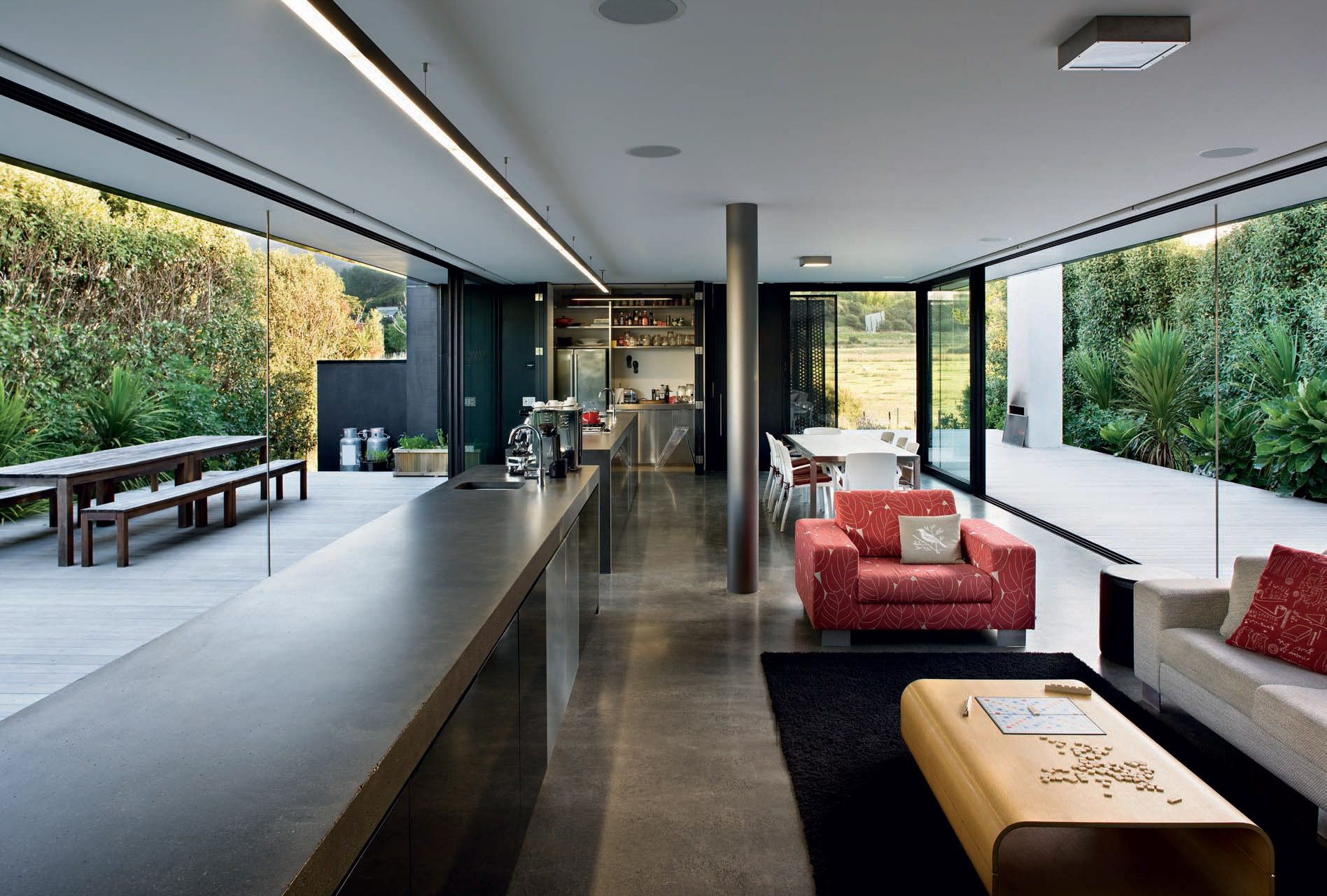Hero: The open-plan living space extends onto north and south decks.
Life on Medlands Beach is like stepping back in time. There is no piped water or electricity, and the small local store is 15 kilometres away over a gravel road. In summer, when bach owners arrive for the holidays, there is a burst of social activity. Longboard and fi shing competitions become a focal point for the small community. However, for most of the year, it is a quiet solitary place, which requires much self-sufficiency.
These qualities are exactly what attracted Anne and Steve Jenkins to Great Barrier Island nearly 30 years ago, and they have been returning here for family holidays ever since. In 2007, an empty plot of land came up for sale along the beach; purchasing it triggered a lifestyle change.
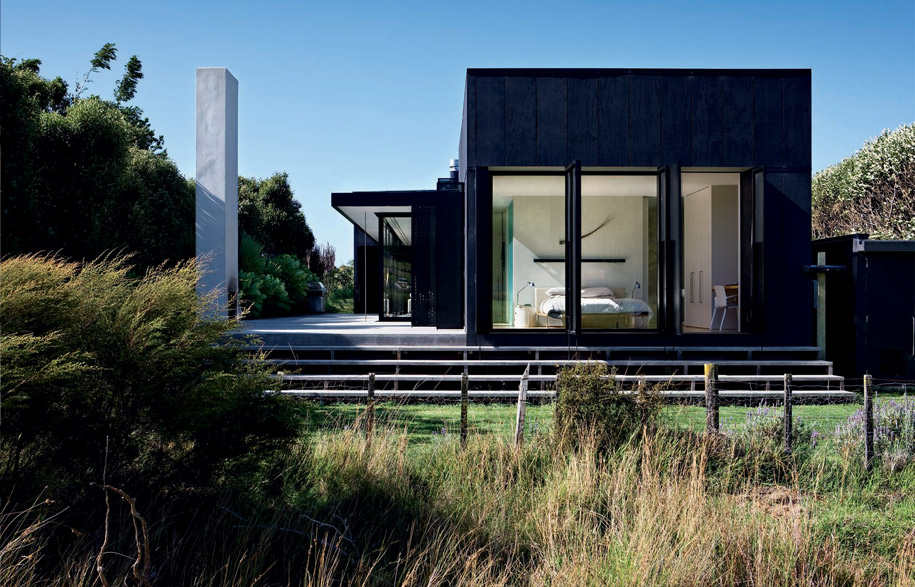
They engaged architects, Jeff Fearon and Tim Hay – who had designed a house further down the beach at Shark Alley – to design their new home. It is where the Jenkins’ love to spend time with family, and where they now live fi ve months of the year on the island.
As a semi-permanent residence rather than a holiday home, the owners wanted privacy and a very direct connection with the land. A view of the sea required a second storey, so locating the living spaces on an upper fl oor was ruled out. Instead, the house is single storey with a roof deck, and sited at the rear of the section to connect with farmland behind.
 An old, red shed and farmland create a textural background.
An old, red shed and farmland create a textural background. The architects began exploring notions around permanence versus temporary, keying off local caravans, holiday cabins and rural sheds. They chose to place the house lightly on the site, with decks to connect it to ground level – in the straightforward manner many local baches do. There are notionally two ‘sheds’ – one at the front and one at the rear – which contain bedrooms. In between, a large ‘tarpaulin’ connects the two, and provides a sheltered living space. A central post anchors this room, and full-height glazing opens it on to the full width of the site. North and south, decks extend the space to the boundaries.
“One of the things we were interested in was what makes it a Barrier building,” says Hay. “Medlands hasn’t been gentrified like some other beach communities, and there is a beautiful haphazardness to some of the buildings. The challenge was to maintain that communal fit for the building rather than create an individual piece.”
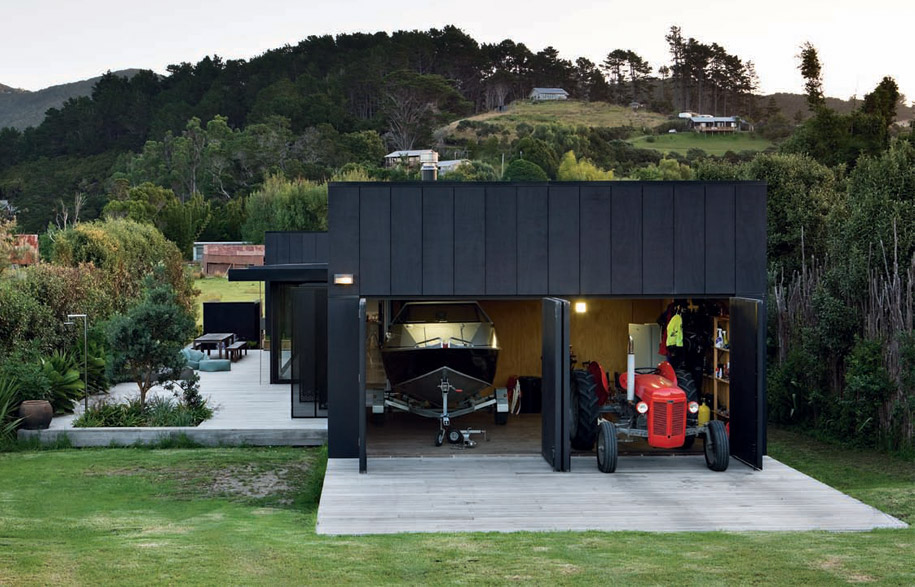
A morning deck and an afternoon deck determined the configuration of the house elements. Main entry and kitchen flow off the morning deck. The living, dining and main bedroom flow onto the afternoon deck, and look out across a quiet rural view of old rusty sheds and the odd cow wandering past.
The owners lived in Vietnam for five years, and return there every few months. This experience enhanced their awareness of noise – natural and ‘man-made’. One of the special moments of the house for them is the experience of rain. “We love sitting in the lounge and being able to see the rain bucketing down in winter,” describes Anne.
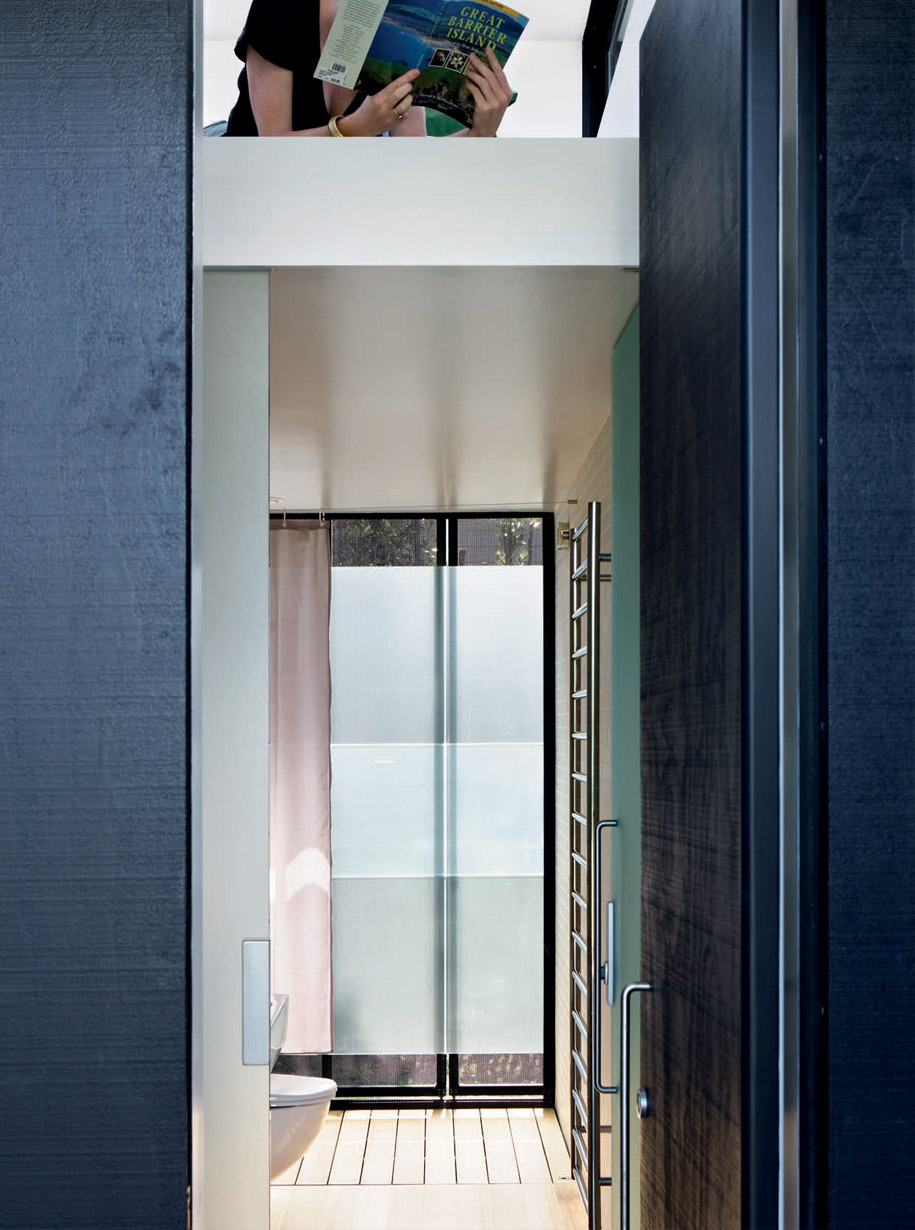
The guest bathroom with reading platform above.
While the living space is incredibly open, in contrast, the bedrooms are very contained and private. From the outside these volumes are shed-like – rough-sawn plywood cladding, ‘barn’ doors, simple in form and detail. The dark skin of their exterior absorbs the harsh New Zealand sun. Steel shutters veil a light and layered interior. Behind each set of shutters is a private verandah, set off a bedroom.
When the inner layer of glass doors is open, the verandah increases the depth of the room, and gives it a semi-outdoor mood. One can feel totally contained and sheltered, yet feel the breeze and hear the sounds of nature. The corridor side is more like a cloister. The floor is external decking, the bedroom walls are clad as the exterior, and the ‘external’ wall is a series of hinged shutters. The bedrooms thus feel more like cabins, and separate from the rest of the house.
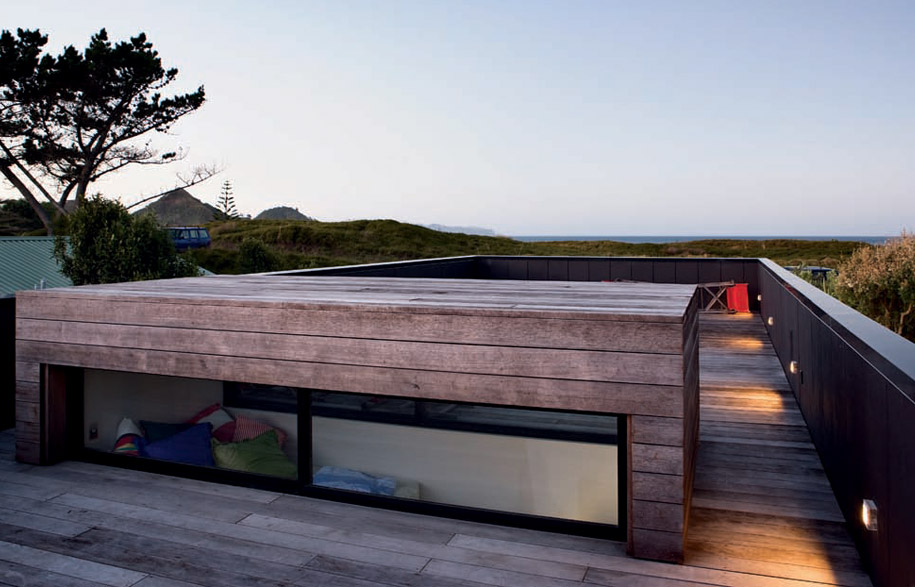
The reading platform skylight pops up through the roof deck.
“Layering and veiling has become a significant aspect of our work whether it be interior, residential or commercial,” comments Fearon. “We allow spaces to overlap and share the experience. Not only inside and outside space, but living and sleeping, bathing and sleeping, bathing and outdoors. We work in layers from a solar and seasonal point of view, and also for privacy. If you want to experience the whole of your site, and avoid limited openings, then screening is logical.”
Fearon and Hay use a carefully selected palette of materials to filter view and light. The results are often quite theatrical and moody. A recent fit out of a Tribeca loft uses multiple fabrics to differentiate zones, resulting in a drapey, soft and slightly surreal air. Clooney Restaurant in Auckland uses fabric fringes to delicately enclose each table, with glass orbs floating through each ‘space’. Transitions create opportunities for this, and at the Barrier house, visual and spatial layering inside the bedroom wings shows these devices to their fullest.
 A 180° view of the bay from the roof terrace.
A 180° view of the bay from the roof terrace.“We like a building to have an active life”, says Hay. “When it is used properly, there is an activation and manipulation of the enclosure that changes at different times of the day and seasonally. This house changes depending on the light: it is quite solid and singular in the harsh midday sun. Then at night, when lights go on, it becomes backlit and illuminated with different skins open. That is something I really enjoy – it can be tuned and have its own life.”
Fearon Hay Architects
fearonhay.com
Photography: Simon Devitt
simondevitt.com

